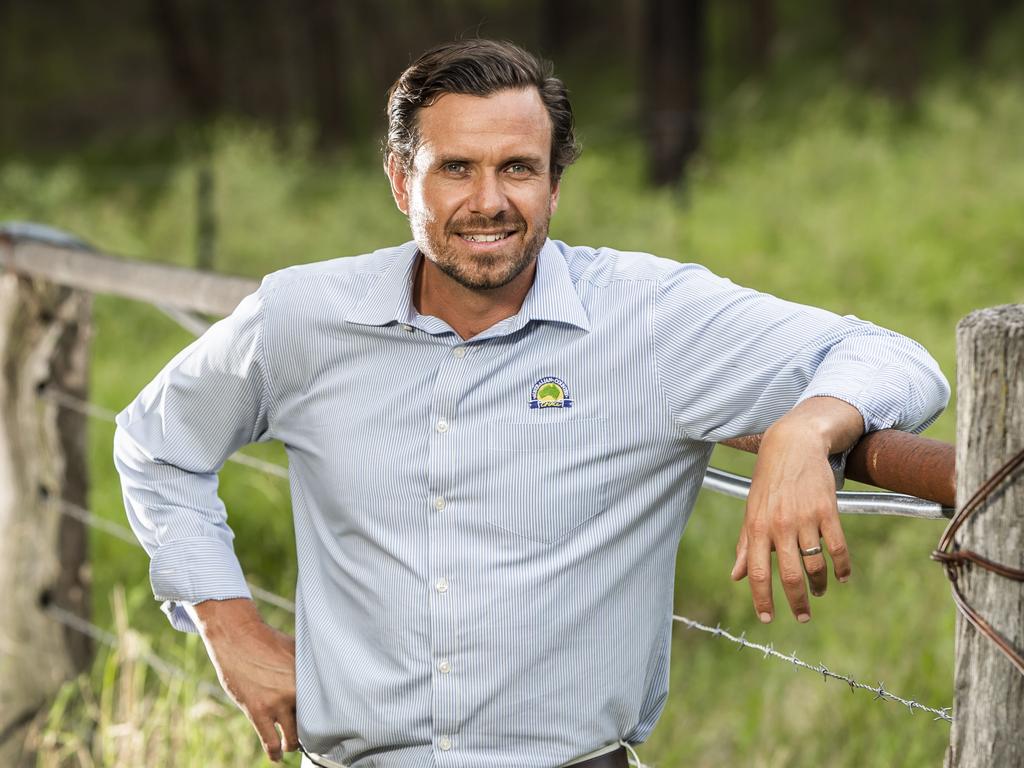Glencore hits back in battle over carbon capture in Great Artesian Basin
Mining giant Glencore has hit back at criticism of its carbon capture and storage scheme in Queensland amid legal threats from farming and environmental groups.
Mining giant Glencore has hit back at criticism of its carbon capture and storage scheme in Queensland amid legal threats from farming and environmental groups, saying pressure to block the scheme puts all carbon capture projects across the country under threat.
Glencore is engaged in an increasingly bitter battle with an alliance of farming and environmental groups over its plans to test the viability of carbon capture in aquifers by injecting liquid carbon dioxide into a well near Moonie in Queensland, about 180km west of Toowoomba.
The deep aquifer Glencore proposes to use is one of many that make up central Australia’s vast Great Artesian Basin, and the company argues its depth and separation from other water sources in the region make it a safe place to test the viability of injecting liquid carbon dioxide as a means of reducing carbon emissions from coal-fired power stations and other major industrial facilities.
But the coalition of farming and environmental groups – including the Queensland and National Farmers Federation, cattle producers peak body Agforce, and Queensland Conservation Council – have opposed the project, arguing it risks making the aquifer unusable in the future and could lead to broader damage within the Great Artesian Basis if the idea proves viable.
The coalition has threatened to fight the idea “all the way to the High Court” if it is approved by the Queensland government.
Glencore project director Darren Greer told The Australian the company viewed the injection as a means of testing the viability of the idea, and it needed entirely separate environmental approvals if it wanted to develop future plans for a commercial-scale operation.
But he said the Queensland government’s decision on Glencore’s environmental impact assessment, due by February 2024, would offer an insight into whether carbon capture schemes would be viable in Australia.
“If a CO2 test injection like this is refused, in spite of the robust science underpinning it, it would send a very bad signal for future CCS projects in Australia, as well as for the future of existing jobs in hard-to-abate industries,” he said.
“It would also make it more difficult and costly for Queensland to meet its ambitious emissions reduction goals.”
The proposal involves drilling a 2.3km injection well to reach the aquifer, then slowly releasing up to 330,000 tonnes of liquid carbon dioxide – sourced from the Millmerran coal-fired power station near Toowoomba – into the water over three years.
The sandstone that hosts the aquifer extends for hundreds of kilometres around the injection point, but Glencore says its modelling shows the “plume” of highly carbonated water should spread by no more than 1.6km from the injection site after a century – and that it can stop and even reverse injection at any point over the trial period if the plume does not behave in accordance with its modelling.
“The monitoring technology we’ve got is all designed around detecting that very early and then we have a remediation plan – we can pull that water back out again and get most of that CO2 back out again,” Mr Greer said.
Mr Greer said Glencore had become frustrated at the “misleading” claims made by opponents of the projects, particularly the description of the liquid carbon dioxide as “toxic waste from a coal mine” – a phrase used by NFF president David Jochinke in a November statement.
Mr Greer said the plant Glencore would use to extract the carbon dioxide from the flue at Millmerran was the same as those used to extract and supply liquid CO2 to industrial users of the gas – including bottled drink makers such as Coca Cola and Pepsi.
“This is a food-grade CO2 product. We will most likely sell some of the excess CO2 from that plant to industrial and food grade uses,” he said.
The aquifer is deep and costly to access, with a bore reaching the water potentially costing up to $5m. Glencore says its testing shows the aquifer also contains too much salt for use as potable water, and high levels of elements such as fluoride – which is safe for drinking in trace quantities but can cause skeletal, dental and gastrointestinal abnormalities in young cattle if present in water at high levels.
Glencore notes that the water from the aquifer could be used by some livestock, “including by pigs because they typically only have short lives before slaughter”.
But water usage from aquifers closer to the surface, in the 800m to 1.1km range more typically used by farms and communities in the region, has risen so much that farming groups want the deep aquifers kept untouched in case they are needed in the future.
Other carbon capture and storage projects have looked to former oil and gas wells as a storage vessel for carbon dioxide, but they have also proved difficult to operate at scale, with Chevron’s project at Gorgon in WA having so far fallen well short of expectations.
Federal Energy Minister Chris Bowen has indicated that companies should not expect government funding for carbon capture schemes, but other federal ministers have said the technology will be necessary to meet targets.
More Coverage
Originally published as Glencore hits back in battle over carbon capture in Great Artesian Basin









